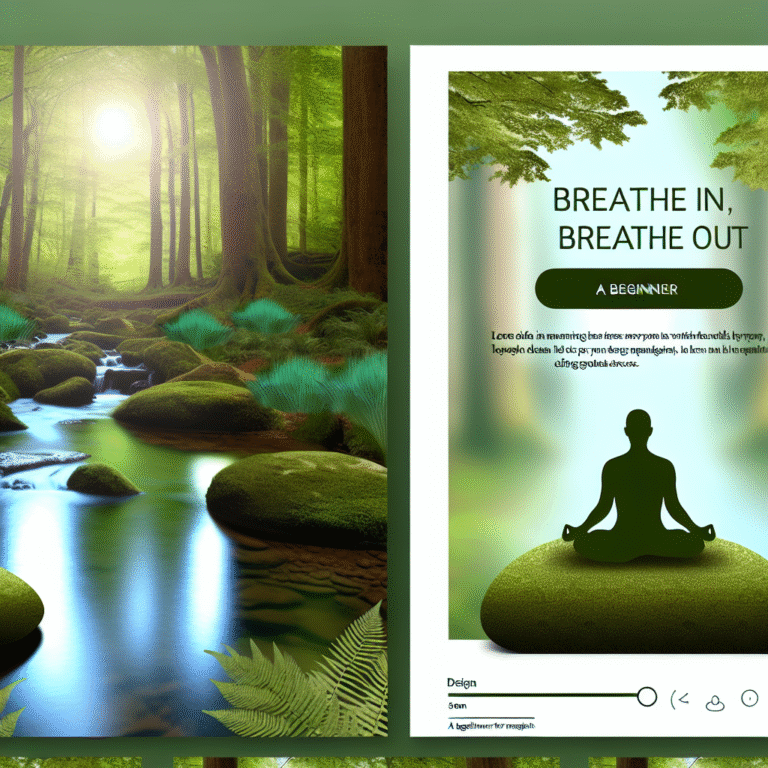
Say No Without Guilt: The Ultimate Guide to Setting Healthy Boundaries in Relationships
Introduction
In a world that constantly demands our time, energy, and emotional bandwidth, learning to set boundaries is not just beneficial—it’s essential. The ability to say no without guilt is a critical skill that fosters self-respect, healthy relationships, and emotional well-being. As conflicts arise in daily life—whether it’s family obligations, work commitments, or social expectations—understanding how to establish and communicate your limits becomes paramount.
Imagine a life where you can express your needs without fear of offending others, where each commitment you make aligns with your priorities and values. This article will delve into the art of setting healthy boundaries in relationships, empowering you to reclaim your time and mental health.
In this comprehensive guide, you will discover valuable insights, actionable tips, and compelling case studies that illustrate the process of mastering this art. By the end of this article, you will be equipped with the tools necessary to say no without guilt and navigate your relationships with clarity and confidence.
Understanding Boundaries
What Are Boundaries?
Boundaries are the limits we set in various aspects of our lives to protect our well-being. They can be physical, emotional, or even digital, and they help define what behaviors are acceptable and what are not. Boundaries are crucial for maintaining healthy relationships, as they allow for mutual respect and understanding.
Why Are Boundaries Important?
Setting boundaries helps us articulate our needs and desires, creating a space for healthier communication. Without them, we may find ourselves overwhelmed, resentful, and unhappy. The art of setting healthy boundaries in relationships ensures that we honor our own needs while also respecting others.
- Mental Well-being: Establishing limits protects our mental health by reducing stress and anxiety levels.
- Healthy Relationships: Clear boundaries foster respect and understanding, allowing relationships to flourish.
- Self-esteem: By advocating for ourselves, we enhance our self-worth and confidence.
The Science Behind Saying No
The Psychology of Guilt
When faced with the prospect of denying a request, many individuals succumb to feelings of guilt. This emotional response is rooted in a fear of disappointing others and a conditioned desire to be liked. Understanding this psychological framework helps normalize the need for boundaries. Recognizing that we cannot please everyone liberates us from the burden of guilt.
Case Study: The Corporate Professional
Consider the case of Lisa, a corporate professional. She’s known for taking on more than her fair share of projects at work out of fear of being viewed as uncooperative. When she finally learned to say no without guilt, her stress diminished, and her performance improved. By setting clear boundaries regarding her workload, she not only protected her own mental health but also empowered her colleagues to share responsibilities.
Lessons Learned
Lisa’s experience illustrates that the guilt associated with saying no often stems from societal pressures and expectations. By confronting these pressures directly, we can learn to prioritize our own well-being.
Practical Steps to Set Healthy Boundaries
Identify Your Boundaries
The first step in saying no without guilt is identifying where you need to establish limits. Consider the different areas of your life—personal, professional, and social—and reflect on where you often feel overwhelmed or taken advantage of.
Table: Personal Boundaries Inventory
| Area | Current Situation | Desired Boundary |
|---|---|---|
| Personal | Always say yes to social events | Say no 1-2 times for personal time |
| Professional | Overwhelmed by extra tasks | Delegate or decline additional work |
| Emotional | Take on friends’ emotional burdens | Limit time spent comforting others |
Communicate Clearly
Once you’ve defined your boundaries, it’s essential to communicate them effectively. Use assertive but respectful language to express your needs.
- Be Direct: "I appreciate the invitation, but I need to take some time for myself this weekend."
- Remain Respectful: "I understand this is important to you, but I can’t commit to this right now."
Manage Expectations
Communicating your boundaries also involves managing the expectations of those around you. Set clear timeframes and stick to them.
Case Study Analysis: The Caregiver
Another compelling example involves John, a caregiver for his aging parents. Initially, he felt guilty about not always being available, leading to burnout. By defining specific times he could help and communicating this to his family, he alleviated his guilt and arranged for alternative care options.
Relevance: John’s story underscores that when expectations are managed well, relationships can improve, and guilt can be reduced.
Overcoming Guilt and Fear
Understand Your Worth
To say no without guilt, it’s vital to acknowledge your own worth. You deserve to take care of your mental, emotional, and physical health. Remind yourself that setting boundaries is not selfish; it’s necessary.
Self-Reflection Techniques
Engage in self-reflection to identify your feelings and thoughts around guilt. Consider journaling or meditative practices to clarify what boundaries mean to you. This practice can help demystify the fear associated with saying no.
Practice Assertiveness
Use role-playing scenarios to practice assertive communication. This approach can desensitize you to the fear of rejection or conflict.
Case Study: The Social Butterfly
Emily loved being at the center of social gatherings but found herself drained and unhappy. Through assertiveness training and reflection, she learned to express that she would attend fewer events. As she practiced, she became more comfortable with saying no without guilt, which ultimately enriched her enjoyment of the gatherings she did attend.
Building Resilience
Developing Emotional Fortitude
Building emotional resilience is crucial for upholding boundaries. Develop coping strategies by engaging in self-care activities that replenish your emotional energy, such as exercise, hobbies, or mindfulness practices.
Setting Consequences for Violating Boundaries
Establish consequences for situations where your boundaries are disregarded. This action emphasizes their importance and can deter others from taking advantage of your openness.
Table: Boundary Consequences
| Situation | Boundary Violation Consequence |
|---|---|
| A friend repeatedly asks for help | Limit future commitments to emergencies only |
| A colleague constantly interrupts | Politely pause them, then assert your contribution |
| Family obligations overwhelm you | Set specific time limits for gatherings |
Conclusion
Learning to say no without guilt is a transformative process that can significantly enhance your relationships and self-esteem. By embracing the art of setting healthy boundaries in relationships, you protect your well-being, affirm your self-worth, and cultivate more meaningful connections with others.
Planning your boundaries, communicating them assertively, and cultivating resilience can help navigate difficult situations without the weight of guilt. Each "no" you confidently express is a step toward a more fulfilling life.
As you embark on this journey, remember: setting boundaries is not only a gift to yourself but also a way to show others how to treat you.
Frequently Asked Questions (FAQs)
1. What are some examples of healthy boundaries?
Healthy boundaries vary by individual but can include saying no to overwhelming requests, limiting time spent with negative influences, and expressing your needs in relationships.
2. Is it ever okay to feel guilty about setting boundaries?
While it’s natural to feel guilt initially, it’s important to remind yourself that your well-being comes first. Guilt often diminishes as you practice asserting your boundaries.
3. How can I communicate my boundaries effectively?
Be direct and assertive, using “I” statements. For example, "I need time alone to recharge" is clearer and more effective than "You always want me to stay out late."
4. What if someone reacts negatively to my boundaries?
Negativity can be disappointing, but it often reveals more about them than you. Stay firm in setting boundaries, and remember that genuine relationships will adapt to respect your limits.
5. Can boundaries change over time?
Absolutely! As your life evolves, so will your boundaries. Revisit and reassess them regularly to ensure they remain aligned with your current needs and values.
By setting healthy boundaries, you allow for personal growth and pave the path for fulfilling relationships. With the insights and tools outlined in this article, you can learn to say no without guilt, promoting a healthier and more balanced life. Remember, your needs are valid, and prioritizing them is essential for your overall happiness!

















